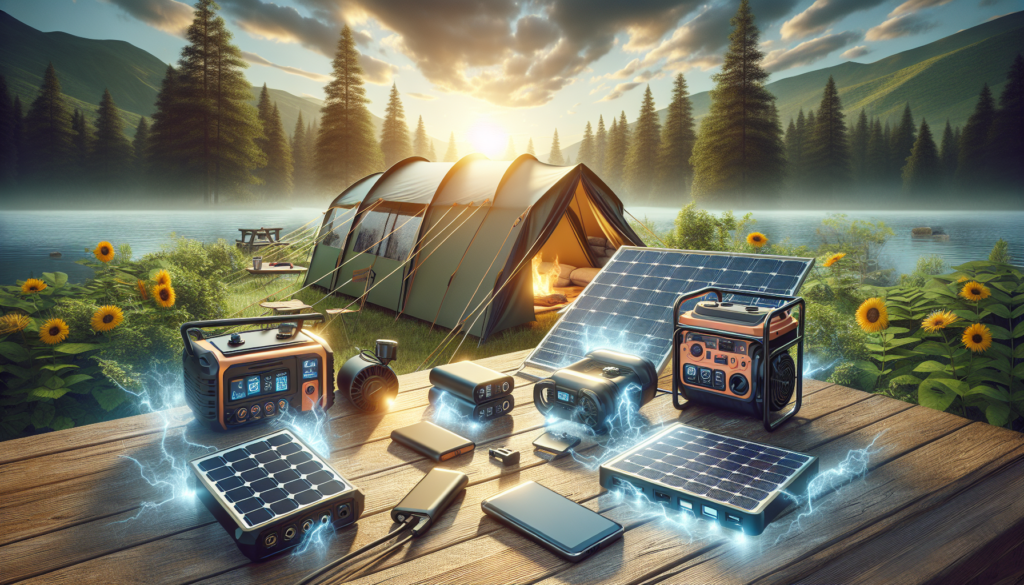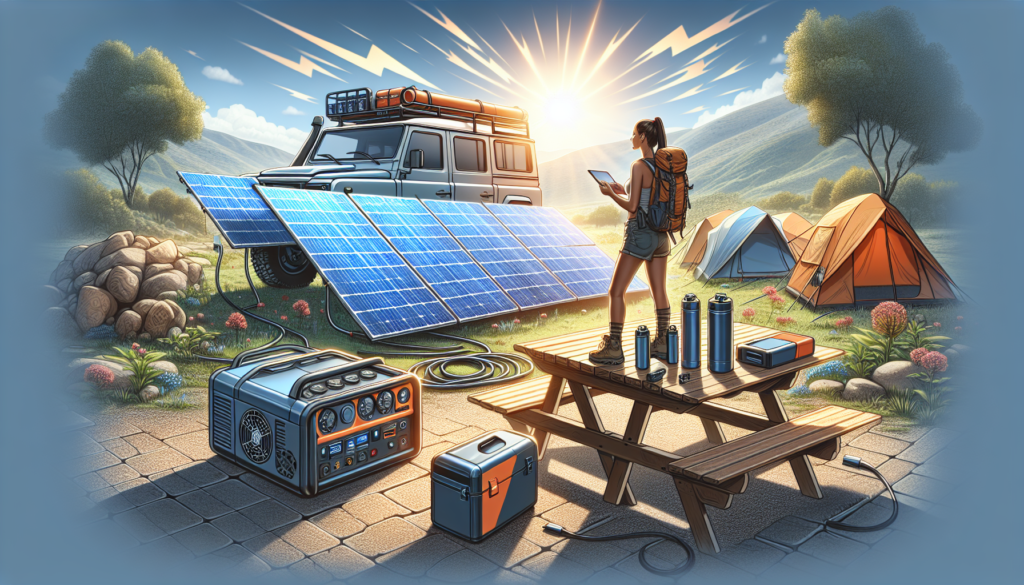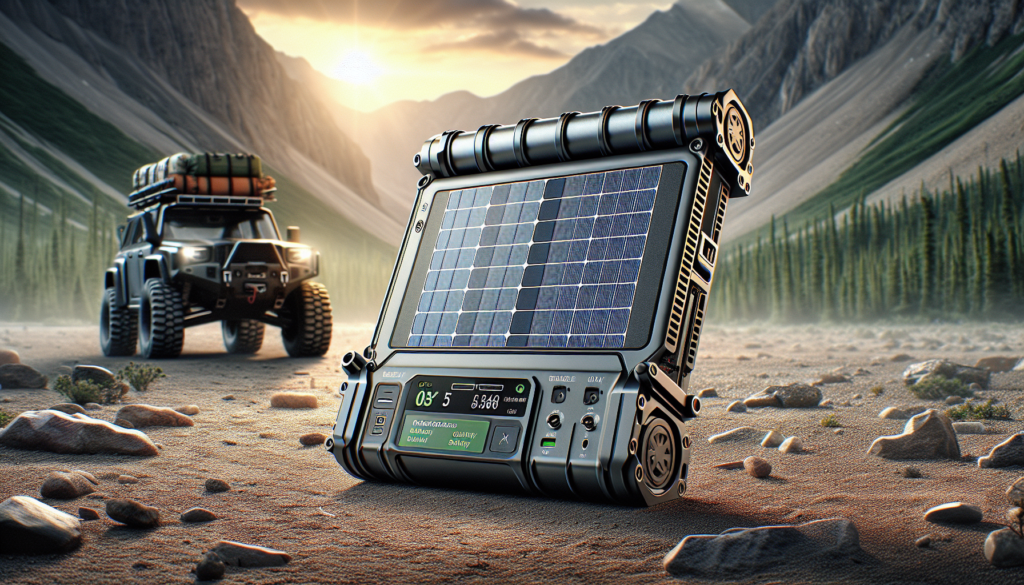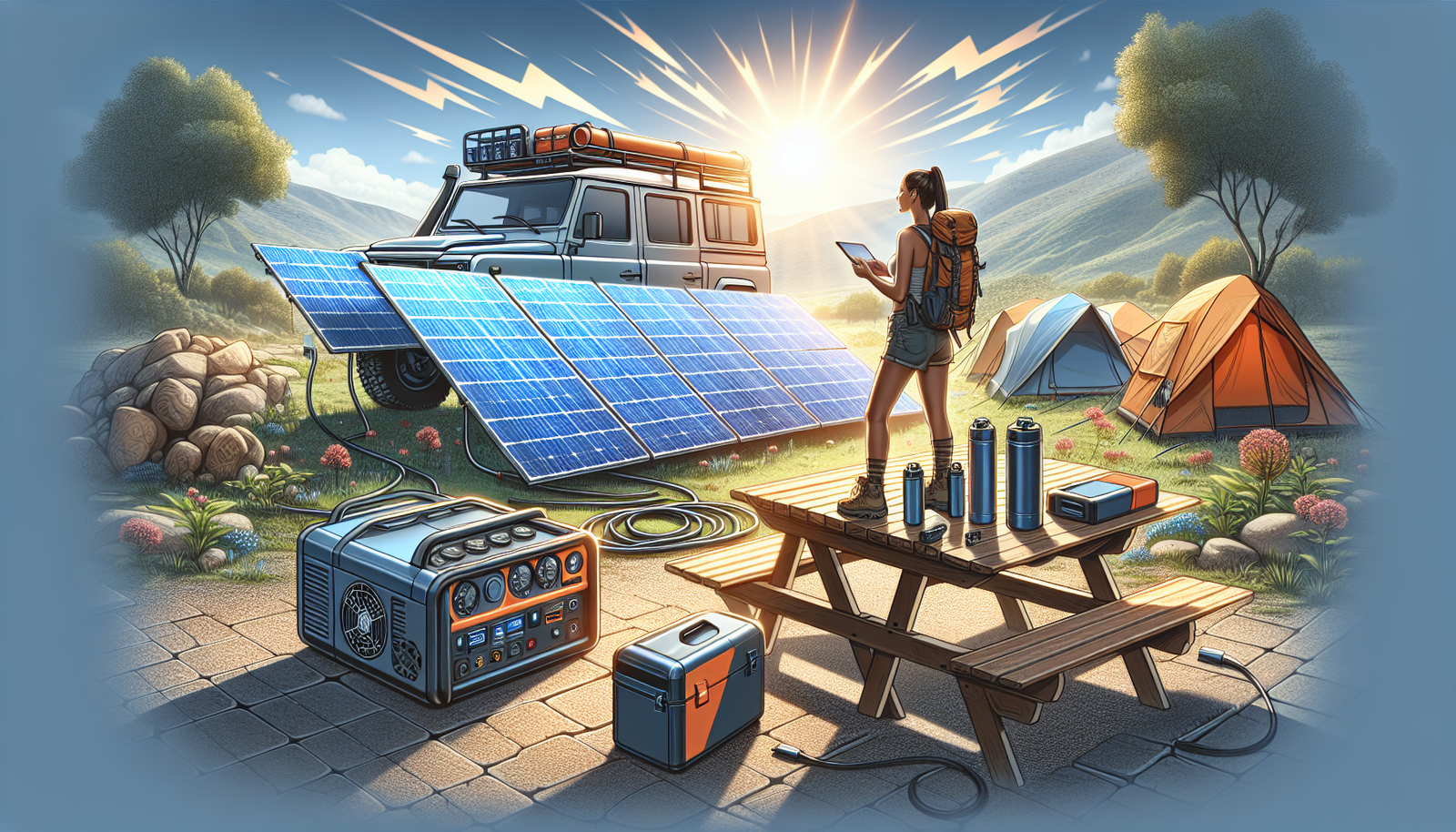Are you an overlanding enthusiast in search of the ultimate portable power solution? Look no further! In this article, we will explore the various options available to meet your power needs while on the road. From solar panels to portable generators, we’ll weigh the pros and cons of each, helping you make an informed decision and ensure you never run out of power during your off-road adventures. So, buckle up and get ready to discover the perfect power solution for your overlanding escapades!

Solar Power
Installation
When it comes to portable power solutions for overlanding, solar power is undoubtedly a top contender. One of the biggest advantages of solar power is its ease of installation. With a solar panel kit, you can set up your own solar power system in no time. Most kits come with detailed instructions, making it a simple and straightforward process. Whether you choose to mount the panels on your vehicle or set them up separately, the installation process is user-friendly and can be done by anyone, even if you have limited technical knowledge.
Portability
Another key factor that makes solar power an attractive option for overlanding is its portability. Solar panels are designed to be lightweight and compact, allowing you to easily transport them from one location to another. Whether you’re going on a short weekend trip or embarking on a long-term adventure, you can conveniently carry your solar panels with you and set them up wherever you go. This flexibility ensures that you have access to power whenever and wherever you need it, making solar power a convenient and reliable choice for overlanding enthusiasts.
Charging Capacity
Solar power offers impressive charging capacity, allowing you to power a wide range of devices and appliances while on the road. Depending on the size and efficiency of your solar panels, you can charge anything from smartphones and tablets to laptops and even portable refrigerators. This versatility is essential for overlanding, where you may have varying power requirements depending on the duration and nature of your trip. With solar power, you can rest assured that your electronic devices will stay charged, ensuring that you stay connected and have the necessary amenities during your overlanding adventures.
Durability
Durability is a crucial aspect to consider when choosing a portable power solution for overlanding, as you’ll likely be exposed to various weather conditions and rough terrains. Solar panels are specially designed to withstand outdoor conditions, including extreme temperatures, rain, snow, and UV exposure. They are built with durable materials and can resist impact, ensuring that they will withstand the rigors of overlanding. With a reliable and robust solar power system, you can count on it to provide you with sustainable and dependable power throughout your adventures.
Portable Generators
Fuel Type
Portable generators are another popular choice for overlanding, providing a reliable and consistent power source. When it comes to fuel type, you have several options to choose from, including gasoline, diesel, propane, and even solar-powered generators. Gasoline generators are the most common choice due to their availability and convenience. They are relatively easy to refill, and you can find gasoline almost anywhere. Diesel generators are known for their fuel efficiency and longevity, making them an excellent choice for long-term overlanding. Propane generators are also a viable option, particularly if you’re looking for a cleaner and quieter power solution. Solar-powered generators, on the other hand, harness the power of the sun, making them a sustainable and eco-friendly choice for overlanding enthusiasts.
Power Output
Portable generators offer significant power output, allowing you to run multiple devices simultaneously. The power output of a generator is typically measured in watts, and you’ll need to consider your power requirements when choosing the right generator for your overlanding adventures. From small portable generators with a few hundred watts to larger ones with several thousand watts, there is a wide range of options to suit different needs. Whether you need to power basic appliances like lights and small electronics or larger devices such as refrigerators and air conditioners, there is a portable generator available to meet your specific power needs.
Noise Level
Noise level is an important consideration when selecting a portable generator for overlanding. Most generators produce some level of noise while running, which can be disruptive to you and your fellow campers. If you prefer a quieter camping experience, you may opt for an inverter generator or a generator with noise reduction features. Inverter generators use advanced technology to produce clean and stable power, resulting in quieter operation compared to traditional generators. Additionally, some generators come equipped with noise reduction features such as soundproof enclosures or mufflers, minimizing the noise level and allowing you to enjoy a peaceful camping experience.
Portability
Portability is a significant advantage of portable generators, enabling you to take power with you wherever you go. While generators are not as lightweight as solar panels, they are designed with portability in mind. Many models come with built-in handles or wheels for easy transportation, allowing you to move them around your campsite or load them into your vehicle effortlessly. Some generators are even designed to be compact and lightweight, making them ideal for packing in smaller vehicles or off-road trailers. When choosing a portable generator for overlanding, consider the size and weight to ensure it suits your transportation needs.

Dual Battery Systems
Installation
Dual battery systems are a popular choice among overlanders who require a reliable power solution for extended off-grid trips. The installation of a dual battery system involves connecting a secondary battery to the vehicle’s electrical system, allowing you to run appliances and accessories without draining the primary starting battery. The installation process can vary depending on the vehicle make and model, but it typically involves mounting the secondary battery, connecting it to the primary battery, and installing a battery management system. While the installation may require some technical knowledge, there are plenty of resources and tutorials available to guide you through the process. It’s also worth considering professional installation if you’re not confident in your abilities.
Battery Capacity
The battery capacity is a crucial factor to consider when opting for a dual battery system. The capacity refers to the amount of energy the batteries can store and deliver. The larger the battery capacity, the longer you can power your devices without recharging. When choosing a dual battery system, consider your power requirements and the duration of your trips. If you plan to run power-hungry appliances or stay off-grid for extended periods, you’ll need a higher battery capacity. It’s recommended to invest in deep-cycle batteries, as they are designed to withstand repeated discharging and recharging cycles, making them an ideal choice for overlanding.
Charging Methods
Dual battery systems offer various charging methods to ensure your batteries stay charged during your overlanding adventures. The most common charging method is through the vehicle’s alternator, which charges the secondary battery while you’re driving. This ensures that the batteries are continually replenished, even if you don’t have access to an external power source. Additionally, you can supplement the charging capabilities by connecting solar panels to the dual battery system. Solar charging allows you to harness the power of the sun and recharge your batteries during the day, providing a sustainable and reliable power source. Some dual battery systems also offer the option of AC charging, allowing you to charge the batteries using shore power or a generator.
Compatibility
When considering a dual battery system, compatibility is a crucial aspect to evaluate. The system must be compatible with your vehicle’s electrical system and battery type. Ensure that the charging and management components of the dual battery system are compatible with the alternator output and battery chemistry. It’s essential to choose a system that is designed to work seamlessly with your specific vehicle make and model. Additionally, consider the compatibility of the system with any additional accessories or appliances you plan to connect, such as solar panels or inverters. Compatibility ensures that your dual battery system operates efficiently and doesn’t cause any electrical issues or damage your vehicle’s components.


